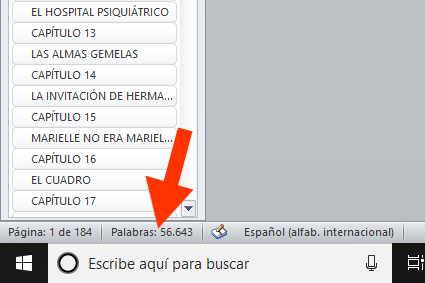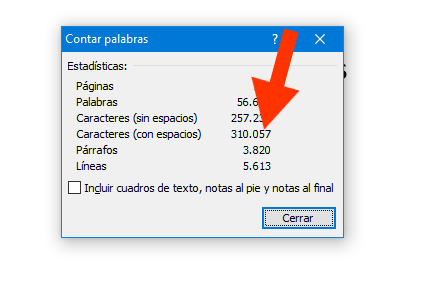Texts Correction Service
Any written work that you want to reach the public requires a correct use of grammar and spelling, so we offer this text correction service.
We offer you two types of text correction:
- Orthotypographical
- Orthotypographical and style
CHARACTERISTICS OF EACH ONE
WHAT IS THE MOST SUITABLE CORRECTION?
The revision and correction of any text or work is essential, although a commercial text is not the same as a literary work, in both cases it is required. Therefore, to decide which correction mode is more appropriate, the type and destination of the work will be taken into account.
Correct a work is essential when publishing it as it will bring you better quality. It is also essential to present it, with possibilities, to those who have to value it.
Due to this, it is valid to send works to contests or to publishers and also to any other place where decisions must be made regarding the content of the writing in question.

A work with errors harms both the author and the publisher. All this it’s due to poor quality and poorly done work. Therefore correction is necessary.
A text with errors will therefore make it more difficult to enter the plot of the story. It will also undermine the author and may even harm the publisher.
Publishers and authors must also be responsible for bringing a work without errors to the reader. Since only being well written, it will deserve the time that will spend reading it.
A text written without errors and neat will be more pleasant to read and will also serve to demonstrate the effort and good work of the author.
The correction of texts is not exclusive to literary works; therefore it is necessary for any writing to be used in a publication. Therefore it is advisable to use it in advertising brochures, presentations, informative texts, plays, comics, etc. must be properly written.
Although this service is mainly offered for texts written in Spanish and Catalan, you can also consult for texts written in other languages.
ORTHOTYPOGRAPHICAL CORRECTION
Orthotypographical correction consists in the linguistic correction used to solve spelling, syntactic, grammatical and typographical errors.
During this, typographical resources will be unified (uppercase, italics, quotes, bold). The principles of aesthetics, functionality, legibility and communicative efficacy will also be applied to the text throughout the orthotypographical correction.
The correction applies to all written elements of the work. That also includes the footers of images, tables or graphs, footnotes, index and bibliography.
During this correction the corrector will detect and eliminate or repair:
- Spelling mistakes.
- Transpositions or omissions of characters.
- Inappropriate or inconsistent use of quotes.
- Syntactic and grammatical errors.
- Accentuation errors, in the use of abbreviations and symbols or in the writing of figures and magnitudes. Incorrect application of uppercase, italic, bold, small, superscript and subscript.
- Punctuation failures (ellipses, dialogue scripts, subsections, etc.).
- Incorrect targets (spacing, indentations …) and alignment errors.
- Placement (paragraph followed or separated) and incorrect punctuation of quotes.
ORTHOTYPOGRAPHICAL AND STYLE CORRECTION
The literary correction of style acts on the syntactic, grammatical and expressive planes in order to polish the text and optimize its resources. It deals with all aspects that without being errors from the normative point of view, negatively affect the work. Eliminating imperfections, the virtues of the text are magnified, giving it the expressiveness, coherence, precision and richness, which allow a clear and fluid reading. Of course, avoiding overcorrection and preserving the author’s own style. Consequently it is not about rewriting the text, nor about editing.
The purpose of the correction of style is:
- Ensure correct use of tenses.
- Reformulate confusing or erroneous sentences and debug ambiguities or contradictions.
- Repair gaps (add missing terms and remove unnecessary ones).
- Correct syntactic inconsistencies (concordance, correlation of verb tenses, prepositions …) and give fluidity to the text with the most precise resources (discursive connectors, subordinates, etc.).
- To correct lexical errors, eliminate muffins, repetitions, redundancies and alliterations.
- Eliminate errors and inaccurate vocabulary.
- Adapt the text to seated uses or a style book.
- Fit the text to the reader to which it is intended, taking into account the location. (For example, the Spanish of Spain is not the same as that of Colombia).
- Preparation of the index, if applicable.
REQUEST A QUOTE
If you want to know how much it would cost you to correct a text, you can ask us for a quote. To do this we will need to know the number of characters, including the spaces between words that your writing has. If you use a word processor, word or similar, you can find it easily. In the lower bar on the left side click on the button where it indicates the number of words and the box will open where you can see the number of characters including spaces. (See images below)


To request the quote, in addition to completing your information on the form, you must indicate the number of characters with spaces in the message you send us.

